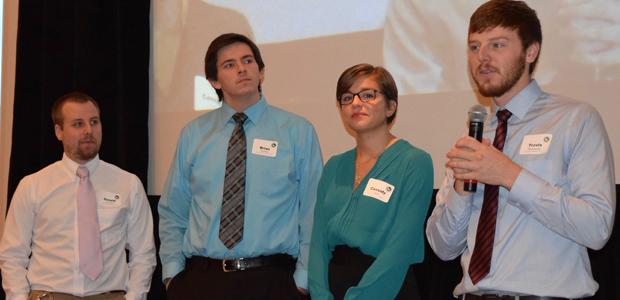Overall, the region's economy shows a mix of both positive and negative trends, according to the latest results presented at the Regional Economic Indicator Forum (REIF) this past fall. Over 220 business and regional leaders attended.
The project, a unified regional effort by economists and student researchers from the University of Minnesota Duluth, the College of St. Scholastica, and the University of Wisconsin Superior, showed that
- The region's unemployment rate has declined over the past five years and returned to a similar level as that from about a decade ago.
- There has been little to no change in employment growth from 2005 to 2013.
- The region's population has increased by only approximately 1% from 2000 to 2014.
- The percentage of the population in poverty throughout the REIF region remained higher than the average for the states of Minnesota and Wisconsin, an ongoing trend that should be monitored.
- Consumer confidence indices have declined for the first time since the REIF project began in Fall 2013. This suggests that both the general population and the REIF participants, e.g., local government, business people, and academics, are growing pessimistic in their economic outlook and anticipate an economic slowdown for the region.
- General business confidence indicators show that during the past six months, 47% of the total survey responses indicated that both the general outlook and the business activity of companies in the region has improved in a moderate way.
UMD's Bureau of Business and Economic Research (BBER), a center of the Labovitz School of Business and Economics (LSBE), provided insight into 19 indicators including demographics, employment, education, home values, household income, and occupational demand.
More detailed information can be found in the full report.
The REIF focuses on the economic performance of a 15-county region that includes Northeastern Minnesota and Northwestern Wisconsin. As part of this on-going project, the three schools collect and monitor data related to county-level economic performance, business and consumer confidence, and regional stock performance. Each forum also includes a special topic—the Skills Gap is featured in this report. Economic student researchers present on their research findings to date gathering data from U.S. Census Bureau, the Bureau of Labor Statistics, Local Area Unemployment Statistics, and the Quarterly Census of Employment and Wages and the regional business and general population.
The intent of the REIF is to continuously build a base of information and provide pertinent data that will measure the progress of the economy and spur new ideas for economic growth and prosperity.
For more information, visit the Regional Economic Indicators Forum webpage.
SAVE THE DATE: March 29, 20167:00 a.m. – 9:00 a.m.
Breakfast + Networking from 7:00 a.m. –7:30 a.m., Program starts promptly at 7:30 a.m.)Featured Topic – Mining
Register on the REIF webpage.
The REIF is made possible through the generous support of the National Bank of Commerce and governed by an advisory committee that includes:
- College of St. Scholastica
- University of Minnesota Duluth
- University of Wisconsin-Superior
- Northeast Minnesota's Small Business Development Center
- Wisconsin Small Business Development Center at UW-Superior
- APEX
- National Bank of Commerce
